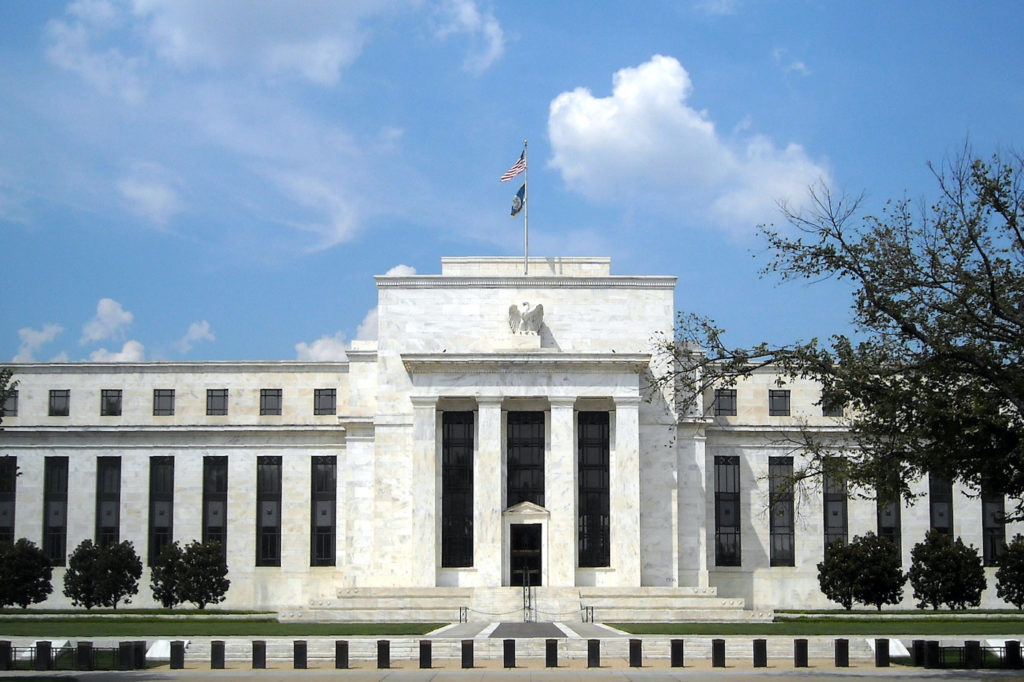“Inflation is always and everywhere a monetary phenomenon in the sense that it is and can be produced only by a more rapid increase in the quantity of money than in output.” Milton Friedman’s statement from 1970 should not be controversial; if the amount of money goes up faster than the amount of stuff available to buy, then the inevitable result is higher prices. Yet, to read recent discussions, one would be excused for thinking there is some great mystery surrounding the reason for inflation. I don’t think I have ever seen such a relatively simple issue clouded in so much confusion. The Federal Reserve, unfortunately, has worsened these misconceptions by misrepresenting the relationship between the money supply and overall economic well-being.
We can begin to clarify some of these misconceptions by asking: what is inflation? It is a rise in the price level. Note: it is not the rise in a particular price. A higher gas price is not the same thing as inflation. Higher food prices or real estate prices or lumber prices are not inflation. In noninflationary times, some prices are always rising, and others are falling. Inflation, on the other hand, means all prices are drifting up simultaneously. That doesn’t mean every price is going up by exactly the same amount; some prices are rising faster than others. An inflation rate of 8 percent means that the average price is rising that much.
The second common misconception surrounds the nature of money. Slightly simplified, money is the asset used to make purchases. Currency is obviously money. So are the funds in checking and savings accounts. As financial markets developed, other assets have also taken on the role of money. Of particular interest for what follows are repurchase agreement (or “repo”) accounts at investment banks, which function roughly like savings accounts for large firms. The Federal Reserve’s actions are ultimately our economy’s source of money. Because there is so much confusion on this issue, it is vital to note that government spending in excess of tax revenue creates government debt, but it does not create money.
Inflation results when the money supply grows too quickly. If you look at a graph of money supply growth over long periods of time and inflation rates, there is a noticeable positive correlation. The relationship is especially strong when there are large increases in the money supply.
Start your day with Public Discourse
Sign up and get our daily essays sent straight to your inbox.In the last two years, the money stock has grown a lot. A whole lot. Because financial markets have become so complicated, we don’t have a perfect measure of the size of the money supply (more about that below), but we can use M2 (roughly: currency plus checking and savings accounts in commercial banks), which is as good as any other number we have. M2 went from about $14 trillion to $15.5 trillion in the two years between March 2018 and March 2020. Then Covid arrived and Fed policy shifted. The money supply went from about $15.5 trillion in March 2020 to $22 trillion in March 2022.
If you had asked in March 2020 what would happen if M2 grew by over 40 percent in a two-year span, I suspect most monetary economists would have said a) we’d have inflation and b) there is no way the Fed would do that. This increase in M2 is surprisingly large even compared to other recent times of economic disruption; in the financial crisis of 2007–2008, M2 rose by 13 percent.
Looking at the data, the story of the recent inflation is not very complicated at all. The Fed increased the money supply by 40 percent over the last two years. As Friedman noted, the time between a large increase in the money supply and the ensuing inflation is roughly twelve to eighteen months. So, right on schedule, prices started rising in the fall of 2021.
What is inflation? It is a rise in the price level. Note: it is not the rise in a particular price. A higher gas price is not the same thing as inflation. Higher food prices or real estate prices or lumber prices are not inflation.
Understanding the Fed’s Choices
The connection between large changes in the money supply and large disruptions in the economy was documented in Milton Friedman and Anna Schwartz’s magisterial book, A Monetary History of the United States. Their most vivid piece of evidence was the Great Depression. They noted that when the banking system collapsed in the early 1930s, the money supply also collapsed (remember that checking and savings accounts are money), and the economy collapsed right along with it. Why did the Fed allow the money supply to collapse during the Depression? At the time, the Fed had no idea how money affected the economy.
Friedman and Schwartz’s analysis was enormously persuasive. So much so that when Ben Bernanke was at the Fed, he announced at a dinner in honor of Friedman, “Regarding the Great Depression. You’re right, we did it. We’re very sorry. But thanks to you, we won’t do it again.” A few years later, in the great Financial Crisis of 2007–2008, Bernanke held true to his promise. To prevent the collapse of the investment banking industry from causing the collapse of the economy (remember repo accounts in investment banks are money), the Bernanke Fed engaged in a large-scale effort to shore up the money supply. Things were bad, but not nearly as bad as they could have become.
Fast forward to today. Does Jerome Powell, the current chair of the Fed, understand the importance of money? Consider this absolutely stunning remark in his February 2021 testimony before Congress. When asked about the rather large increase in the money supply over the previous year, Powell replied:
When you and I studied economics a million years ago, M2 and monetary aggregates generally seemed to have a relationship to economic growth. Right now, I would say the growth of M2, which is quite substantial, doesn’t really have important implications for the economic outlook. M2 was removed some years ago from a standard list of leading indicators. It’s just that classic relationship between monetary aggregates and economic growth and the size of the economy, it just no longer holds. We’ve had big growth of monetary aggregates at various times without inflation. So, it’s something we have to unlearn, I guess.
Let’s examine just a couple of the remarkable things about his statement. First, he is blurring the distinction between an increase in money and an increase in a particular measure of money. The Financial Crisis of 2008 revealed that measures of the money supply do not include a significant number of assets that function as money in the modern world. Back in the 1950s and 1960s, Friedman and Schwartz identified M2 as a reasonably good measure of money. But financial markets are vastly more complicated now than they were sixty years ago. In particular, after 2008 it was obvious that a large amount of money is in repo accounts at investment banks, which are not measured in M2. (In fact, we have no data at all on the size of repo accounts.)
If Powell was simply saying that M2 is no longer as good a measure of the total volume of money as it used to be, then he would be right. But he seems to go further than that, implying that even if we had a good measure of money, there would still not be any reason to look at it. He bases that conclusion on the fact that sometimes the measured money supply grows rapidly without inflation following.
But surely Powell knows that context matters. In 2008, if the collapse of the investment banks (and the corresponding collapse in repo accounts) led to a collapse of the money supply, then that 13-percent increase in M2 may well have not been an increase in the total money supply. Similarly, in times of rapid economic growth, the economy needs a higher money growth rate just to keep prices steady. None of this alters the fact that in any given economic situation, holding all else constant, a faster money supply growth rate will increase prices.
Second, and even more importantly, Powell is confusing times of relatively stable prices with times of high inflation. The data on this are really clear. It is true that in countries with relatively stable prices there is not a tight connection between small increases in the amount of money and inflation. An increase in the money supply growth of a half percentage point does not necessarily lead to a half percentage point increase in inflation. But there is a clear difference between countries with persistently low and persistently high growth rates in their money supply.
It does not take some sophisticated statistical analysis to see the radical change in M2 in the last two years. There is simply no way that anyone could look at a graph of M2 and not notice the massive change in the growth rate starting in March 2020. The lack of a tight relationship between the relatively constant money supply growth rate and the very low inflation rate over the entire time between the mid-1980s and 2019 was an odd explanation for why Powell is not worried about what even he called a “quite substantial” increase in M2 since March 2020.
Why did the Fed increase the money supply so much? The answer is hard to avoid: hubris. The Fed has come to believe it has the responsibility and the power to manage the macroeconomy. A pandemic hits and the government shuts down the economy? The Fed is here to prop up the economy. The government wants a massive increase in spending financed by borrowing? The Fed is here to buy all that new debt to make sure that interest rates will not rise. A 40 percent rise in the measured money supply? No problem at all.
Ending Inflation—and Hubris
The Fed has been very slow to recognize the significance of the increase in measured inflation. At first, claiming that the inflation was just transitory, they did little. In the last couple of months, they have begun to acknowledge that the inflation is not transitory and that they should do something about it.
To end inflation, the Fed must stop increasing the money supply so much. The last time the Fed pretended it could increase the money supply and not worry about the long run inflationary consequences was the 1970s. To end that inflation, the Fed under Paul Volcker slammed on the brakes in the creation of money. The result was the largest recession since the Great Depression.
Hubris is a dangerous thing in monetary policy, as Friedman observed. Friedman famously argued that the Fed should manage monetary policy by a rule rather than discretion.
How bad will the recession be this time? We don’t know. One of the problems with economic theory is that on a chalkboard I can easily end inflation in a short period of time with no bad things happening. While I know a lot about my chalkboard economy, the Fed has nowhere near that level of omniscience about the actual economy. If they do too little, inflation will get much higher; if they act more forcefully, there will be a large recession. Once you’ve let inflation get high, it is really hard to put the genie back in the bottle without a lot of pain.
Hubris is a dangerous thing in monetary policy, as Friedman observed. He famously argued that the Fed should manage monetary policy by a rule rather than discretion. His preferred rule was a constant increase in the measured money supply. Since money is more complicated than it was when Friedman wrote, a better candidate for a rule would focus on interest rates rather than the measured money supply. (The Taylor Rule is a good example.)
Friedman cleverly noted that eliminating discretion in monetary policy was a horrible idea in theory (one can always do better than a rule on a chalkboard), but a good idea in practice. The problem is not that Fed officials are evil; the problem is that they do not know as much as they think they know. The advantage of a rule, the only advantage of a rule, is that it avoids very large policy mistakes. A monetary policy rule would not allow the money supply to grow by 40 percent over two years. Fed officials, thinking they are Masters of the Economy, apparently do.
When I was a student back in the 1980s, I asked my money and banking professor, Tom Mayer, author of the then-bestselling textbook on the matter, why the country continued entrusting monetary policy to officials who thought they could consistently outsmart the economy. His reply was that people always thought they had learned the right lessons from the past and would do better next time. He then added that it would probably take another round of high inflation to convince people otherwise. We’ll see if he was right.














